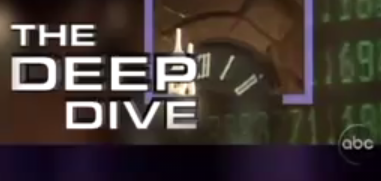
It appears someone has posted the now-classic episode of Nightline about Ideo (called the Deep Dive) to YouTube. I hope it’s legit and Disney/ABC isn’t going to make somebody take them down. But here’s the link, hoping that doesn’t happen.
About 10 years ago, I started a job as an “Internet Copywriter” at a small web consultancy in North Carolina. By then, I’d already been steeped in the ‘net for seven or eight years, but mainly as a side-interest. My day jobs had been web-involved but not centrally, and my most meaningful learning experiences designing for the web had been side projects for fun. When I started at the new web company job, I knew there would need to be more to my role than just “concepting” and writing copy next to an art director, advertising-style. Our job was to make things people could *use* not just look at or be inspired to action by. But to be frank, I had little background in paid design work.
I’d been designing software of one kind or another off and on for a while, in part-time jobs while in graduate school. For example, creating a client database application to make my life easier in an office manager job (and then having to make it easy enough for the computer-phobic clerical staff to use as well). But I’d approached it as a tinkerer and co-user — making things I myself would be using, and iterating on them over time. (I’d taken a 3-dimensional design class in college, but it was more artistically focused — I had yet to learn much at all about industrial design, and had not yet discovered the nascent IA community, usability crowd, etc.)
Then I happened upon a Nightline broadcast (which, oddly, I never used to watch — who knows why I had it on at this point) where they engaged the design company Ideo. And I was blown away. It made perfect sense… here was a company that had codified an approach to design that I had been groping for intuitively, but not fully grasped and articulated. It put into sharp clarity a number of crucial principles such as behavioral observation and structured creative anarchy.
I immediately asked my new employer to let me order the video and share it with them. It served as a catalyst for finding out more about such approaches to design.
Since then, I’ve of course become less fully enamored of these videos… after a while you start to see the sleight-of-hand that an edited, idealized profile creates, and how it was probably the best PR event Ideo ever had. And ten years gives us the hind-sight to see that Ideo’s supposedly genius shopping cart didn’t exactly catch on — in retrospect we see that it was a fairly flawed design in many ways (in a busy grocery store, how many carts can reasonably be left at the end-caps while shoppers walk about with the hand-baskets?).
But for anyone who isn’t familiar with the essence of what many people I know call “user experience design,” this show is still an excellent teaching tool. You can see people viscerally react to it — sudden realization about how messy design is, by nature, how interdependent it is with physically experiencing your potential users, how the culture needed for creative collaboration has to be cultivated, protected from the Cartesian efficiencies and expectations of the traditional business world, and how important it is to have effective liaisons between those cultures, as well as a wise approach to structuring the necessary turbulence that creative work brings.
Then again, maybe everybody doesn’t see all that … but I’ve seen it happen.
What I find amazing, however, is this: even back then, they were saying this was the most-requested video order from ABC. This movie has been shown countless times in meetings and management retreats. And yet, the basic approach is still so rare to find. The Cartesian efficiencies and expectations form a powerful presence. What it comes down to is this: making room for this kind of work to be done well is hard work itself.
And that’s why Ideo is still in business.
Tags: Design, designthinking, ideo, userexperience


